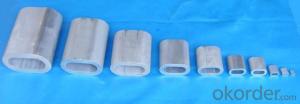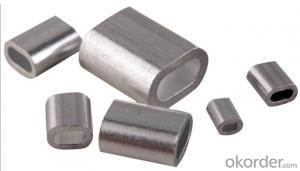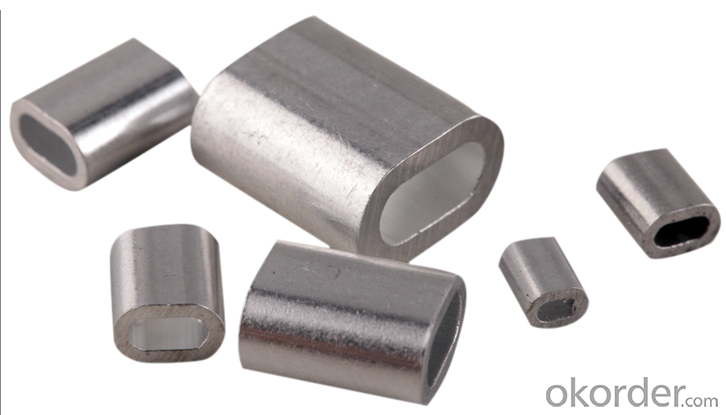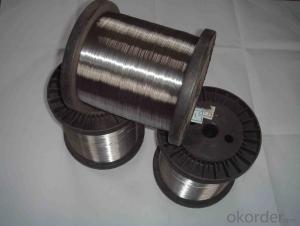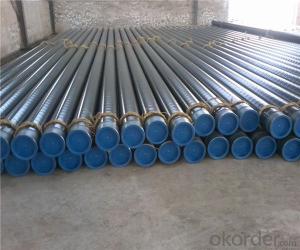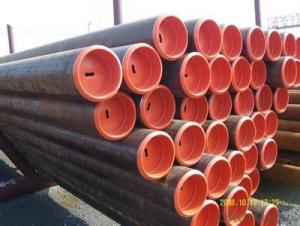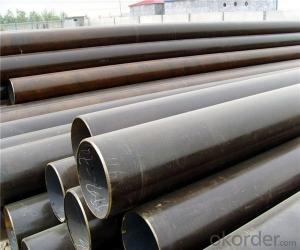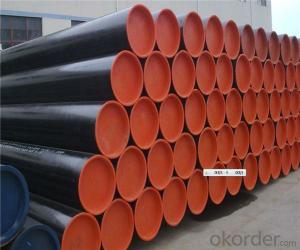Aluminum Sleeve Hot Sale and High Quality
- Loading Port:
- Shanghai
- Payment Terms:
- TT OR LC
- Min Order Qty:
- 10000 PCS
- Supply Capability:
- 3000000 PCS/month
OKorder Service Pledge
OKorder Financial Service
You Might Also Like
DIN3093 ALUMINUM OVAL SLEEVE FOR STEEL WIRE ROPE
1.Material:aluminum
2.Size:1mm-60mm
3.Type:DIN3093
| DIN3093 ALUMINUM OVAL SLEEVE FOR STEEL WIRE ROPE | |||||
| SIZE | INSIDE WIDTH | INSIDE LENGTH | THICKNESS | LENGTH | WEIGHT |
| MM | MM | MM | MM | MM | KG/1000PCS |
| 1 | 1.2 | 2.4 | 0.65 | 5 | 0.098 |
| 1.5 | 1.7 | 3.45 | 0.75 | 6 | 0.176 |
| 2 | 2.2 | 4.4 | 0.85 | 7 | 0.285 |
| 2.5 | 2.7 | 5.4 | 1.05 | 9 | 0.439 |
| 3 | 3.3 | 6.6 | 1.25 | 11 | 0.907 |
| 3.5 | 3.8 | 7.6 | 1.5 | 13 | 1.18 |
| 4 | 4.4 | 8.8 | 1.7 | 14 | 1.63 |
| 4.5 | 4.9 | 9.8 | 1.9 | 16 | 2.39 |
| 5 | 5.5 | 11 | 2.1 | 18 | 3.62 |
| 6 | 6.6 | 13.2 | 2.5 | 21 | 5.87 |
| 6.5 | 7.2 | 14.4 | 2.7 | 23 | 7.18 |
| 7 | 7.8 | 15.6 | 2.9 | 25 | 9.83 |
| 8 | 8.8 | 17.6 | 3.3 | 28 | 12.96 |
| 9 | 9.9 | 19.8 | 3.7 | 32 | 18.94 |
| 10 | 10.9 | 21.8 | 4.1 | 35 | 24.09 |
| 11 | 12.1 | 24.2 | 4.5 | 39 | 35.35 |
| 12 | 13.2 | 26.4 | 4.9 | 42 | 44.18 |
| 13 | 14.2 | 28.4 | 5.4 | 46 | 59.86 |
| 14 | 15.3 | 30.6 | 5.8 | 49 | 73.5 |
| 16 | 17.5 | 35 | 6.7 | 56 | 111 |
| 18 | 19.6 | 39.2 | 7.6 | 63 | 156 |
| 20 | 21.7 | 43.4 | 8.4 | 70 | 217 |
| 22 | 24.3 | 48.6 | 9.2 | 77 | 292 |
| 24 | 26.4 | 52.8 | 10 | 84 | 376 |
| 26 | 28.5 | 57 | 10.9 | 91 | 481 |
| 28 | 31 | 62 | 11.7 | 98 | 603 |
| 30 | 33.1 | 66.2 | 12.5 | 105 | 739 |
| 32 | 35.2 | 70.4 | 13.4 | 112 | 897 |
| 34 | 37.8 | 75.6 | 14.2 | 119 | 1077 |
| 36 | 39.8 | 79.6 | 15 | 126 | 1275 |
| 38 | 41.9 | 83.8 | 15.8 | 133 | 1503 |
| 40 | 44 | 88 | 16.6 | 140 | 1734 |
| 42 | 46.2 | 92.4 | 17.5 | 147 | 2024 |
| 44 | 48.4 | 96.8 | 18.3 | 154 | 2314 |
| 46 | 50.6 | 101.2 | 19.2 | 161 | 2662 |
| 48 | 52.8 | 105.6 | 20 | 168 | 3010 |
| 50 | 55 | 110 | 20.8 | 175 | 3412 |
| 52 | 57.2 | 114.4 | 21.6 | 182 | 3813 |
| 54 | 59.4 | 118.8 | 22.5 | 189 | 4293 |
| 56 | 61.6 | 123.2 | 23.3 | 196 | 4772 |
| 58 | 63.8 | 127.6 | 24.2 | 203 | 5326 |
| 60 | 66 | 132 | 25 | 210 | 5880 |
Aluminum Sleeve Bushing
Aluminum Sleeve Bushing
Commodity name | aluminum sleeve oval DIN3093 |
Origin | China mainland |
Material | aluminum |
Surface treatment | oxidize |
Process | extrude |
Size | From 1mm inch to 56mm |
M.O.Q | 10-100PCS |
Packing | Gunny bag or polywoven bag or carton and pallet / by customer requirements. |
Delivery time | 15-25 days after order confirmation |
Payment term | T/T, L/C, Western Union |
Business type | Manufacturer, trading |
Certifications | ISO9001,CE |
Advantage | 1. Over 15 years experience of manufacturing and exporting 2. Professional service 3.Competitive price |
Notes | Special specifications and marks can be made according to customers requirements; |
Different function, size and shape available. | |
It is available to produce by customer drawing. | |
Main products | Forging parts, Electric fitting parts, Eye bolt, Turnbuckle, shackles, Link Chain, Hooks, Aluminum sleeve, Thimble, Rigging hardware |
- Q: Can steel pipes be used in the oil and gas industry?
- Yes, steel pipes are commonly used in the oil and gas industry. Steel pipes are known for their strength, durability, and resistance to corrosion, making them suitable for transporting and storing various fluids and gases in the industry. These pipes can withstand high pressure and extreme temperatures, which are often encountered in oil and gas operations. Additionally, steel pipes can be easily welded together, allowing for efficient assembly and maintenance. Overall, steel pipes are a reliable and cost-effective choice for the oil and gas industry.
- Q: What are the different methods of pipe bending for steel pipes?
- Some of the common methods of pipe bending for steel pipes include rotary draw bending, induction bending, and hot bending.
- Q: What are the common applications of steel pipes in industrial settings?
- Steel pipes are commonly used in industrial settings for various applications such as transporting fluids and gases, providing structural support in construction projects, conveying materials in manufacturing processes, and facilitating the distribution of water, oil, and gas in pipelines.
- Q: How do you calculate the maximum allowable deflection for steel pipes?
- The maximum allowable deflection for steel pipes can be calculated using various formulas and guidelines set by industry standards. Factors such as the material properties of the steel, pipe diameter, wall thickness, and the applied load are taken into consideration. These calculations typically involve using equations that relate to the pipe's moment of inertia, modulus of elasticity, and the specific loading conditions. It is recommended to consult relevant engineering codes and standards, such as ASME B31.1 or ASME B31.3, to ensure accurate calculations and safe design.
- Q: What are steel pipes made of?
- Steel pipes are made of a strong and durable alloy known as steel, which is primarily composed of iron and carbon, along with small amounts of other elements such as manganese, silicon, and sulfur.
- Q: Can steel pipes be used for culvert applications?
- Yes, steel pipes can be used for culvert applications. Steel pipes are commonly used for culverts due to their strength, durability, and resistance to corrosion. They are capable of handling heavy loads and can withstand harsh environmental conditions, making them suitable for various culvert applications such as road and railway crossings, drainage systems, and stormwater management.
- Q: What's the use of steel pipe?
- No other type of steel can replace the steel tube entirely, but the steel tube can take the place of some sections and bars. Steel pipe is very important to the development of national economy and the improvement of human life quality, much better than other steel products. From the people's daily utensils, furniture, water supply and drainage, gas supply, ventilation and heating facilities to all kinds of agricultural machinery equipment manufacturing, underground resources development, national defense and space use guns, bullets, missiles, rockets and so cannot do without steel.
- Q: What is the difference between API 5L and ASTM A106 steel pipes?
- API 5L and ASTM A106 steel pipes are both widely used in the oil and gas industry, but they have some key differences. API 5L is a specification for seamless and welded steel pipes used for pipeline transportation systems in the petroleum and natural gas industries. It covers various grades of carbon and alloy steel pipes, with different strength levels and impact requirements. API 5L pipes are designed for conveying fluids, such as oil, gas, and water, over long distances. On the other hand, ASTM A106 is a specification for seamless carbon steel pipes used for high-temperature service. It covers seamless pipes for pressure and mechanical applications, including transportation of fluids and gases in industries like refineries, power plants, and boilers. While both API 5L and ASTM A106 pipes are used in similar applications, the main difference lies in their intended use and the specific requirements they must meet. API 5L pipes are primarily used for pipeline transportation systems, whereas ASTM A106 pipes are more focused on high-temperature service applications. Additionally, the manufacturing processes and testing requirements for both specifications may vary.
- Q: What is the thickness of steel pipes?
- The thickness of steel pipes can vary depending on the specific application and type of pipe being used. Generally, steel pipes come in a range of thicknesses, which are measured in terms of their schedule or wall thickness. The most common schedule for steel pipes is Schedule 40, which has a standard wall thickness. However, thicker pipes with higher schedules, such as Schedule 80 or Schedule 160, are also available for applications requiring greater strength or pressure resistance. Additionally, the thickness of steel pipes can also be customized based on specific project requirements.
- Q: How are steel pipes protected against electromagnetic interference?
- Steel pipes can be protected against electromagnetic interference by using various techniques such as applying electromagnetic shielding coatings, implementing grounding measures, using insulating materials, and employing electromagnetic interference filters or suppressors. These methods help to minimize the impact of external electromagnetic fields on the steel pipes, ensuring their integrity and functionality.
Send your message to us
Aluminum Sleeve Hot Sale and High Quality
- Loading Port:
- Shanghai
- Payment Terms:
- TT OR LC
- Min Order Qty:
- 10000 PCS
- Supply Capability:
- 3000000 PCS/month
OKorder Service Pledge
OKorder Financial Service
Similar products
Hot products
Hot Searches
Related keywords
